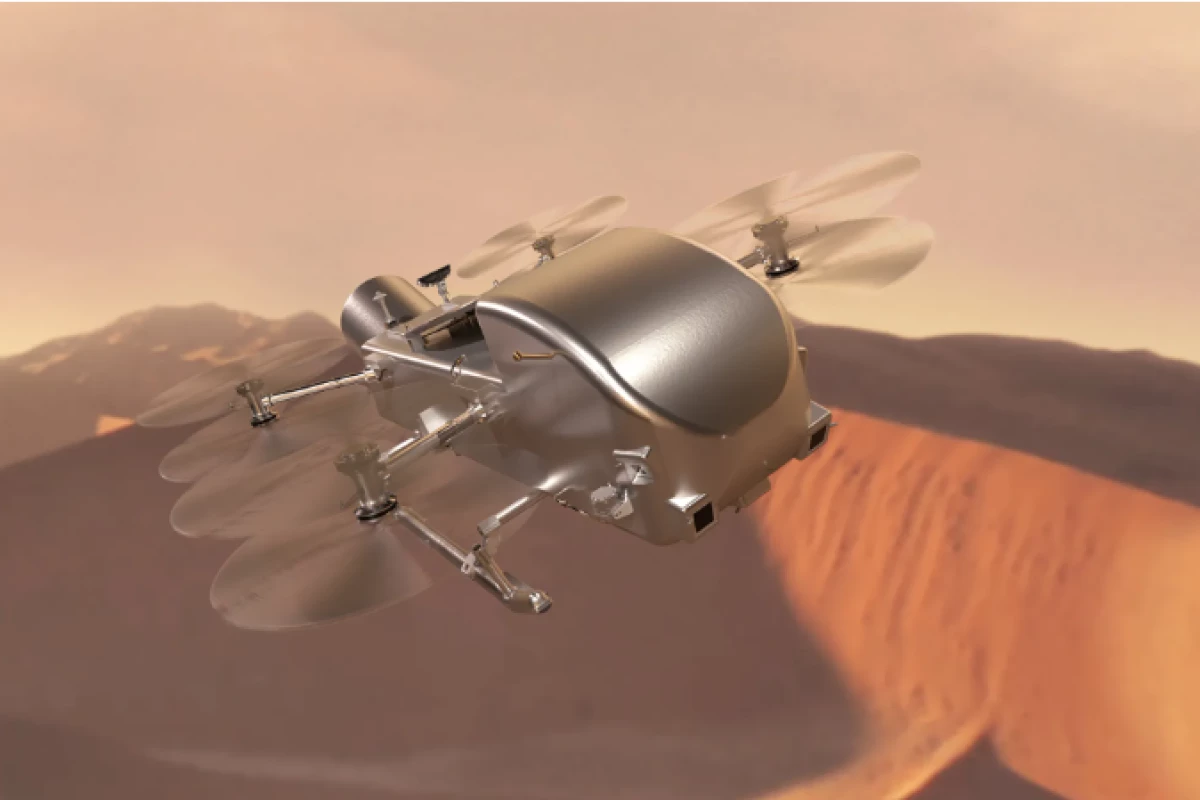NASA has given the green light for the nuclear-powered Dragonfly rotorcraft to explore Saturn's largest moon, Titan. Approval for the 2028 interplanetary mission comes after years of delay due to COVID-19 and a series of cost overruns.
Titan may be about 746 million miles (1.2 billion km) from Earth and one of the most difficult bodies in the solar system to explore, but it's such an oddity that it attracts scientific explorers despite the hefty price tag to get there. Titan is not only the largest moon of Saturn, but the second largest in the solar system. It's also the only one of two moons with a substantial atmosphere. Not just an atmosphere, but one denser than that of our Earth.
On top of this, Titan is an organic chemist's dream. Mostly consisting of nitrogen, Titan's atmosphere has significant amounts of methane. There'd be a lot more than the present ~2.7%, but most of it has been converted by the Sun into complex hydrocarbons that form into clouds and rain down on the surface to create lakes of methane, ethane, and other compounds. There may even be a water ocean hidden inside the moon.
The problem is, how to explore such a place. One simple lander has already plunged into the Titanian atmosphere, but a more ambitious mission needs to be mobile. On the Moon or Mars, this is simple (in very relative terms) and requires only wheeled rovers capable of trundling from place to place, but Titan is more like a swamp consisting of petroleum byproducts.
That means a different approach. In the wake of NASA's recently concluded Ingenuity Mars helicopter mission that was supposed to last a month but went on for about three years, the space agency is keen to exploit the autonomous rotorcraft technology that seems to have exploded on the scene.
Dragonfly seems to fit the bill with its ability to hop from place to place as it explores the landscape and boggy shores of Titan. Powered by a radiothermal generator and flying on aluminum/titanium rotors, Dragonfly is designed to conduct not only a general geological survey, but to study the organic chemistry of Titan and seek out biosignatures, though Titan is not generally regarded as a good candidate for extraterrestrial life. It is seen more as an example of the primordial soup that scientists believe gave rise to life on Earth.

For its mission, Dragonfly would fly from one site to the next and use its sensors, including a radiation backscatter system and a mass spectrometer, to study the chemistry of the area. It will also record the local weather and seismology to learn more about the interior structure of Titan.
Due to the many budget arguments, the delay in launching Dragonfly will mean that the mission will require a larger, more powerful rocket to make sure it lands on Titan by the prescribed 2034 date.
"Dragonfly is a spectacular science mission with broad community interest, and we are excited to take the next steps on this mission," said Nicky Fox, associate administrator, Science Mission Directorate at NASA Headquarters in Washington. "Exploring Titan will push the boundaries of what we can do with rotorcraft outside of Earth."
Source: NASA







